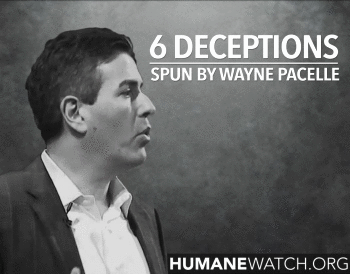Feral Hogs: The Anti-Hunter's Inconvenient Truth

Most animal rights activists are hard-core, unwavering idealists who stick to their mantra that “no animal should never be harmed, unless of course that animal creates problems in their own back yard. A few years ago there were news reports on the annual deer hunt protests that occurred on the East Coast. We don’t see much of those anymore; at least not since whitetail deer became so overpopulated that Bambi and her brethren regularly raid Mrs. Pacellle’s petunia patch. There is a similar anti-hunter silence in Texas, where feral hogs have proliferated throughout the farms and fields and golf courses of the Lone Star State. Of course, Texans, being much more sensible people than the anti zealots are actually doing something about the problem in the form of legislation and incentive programs that, surprise surprise, relies on hunters to do the heavy lifting of conservation.
Feral hogs are found in every one of the state’s 54 counties and estimates are these 2.6 million swine cause over $50 million in damages annually. Part of the reason for this proliferation of pork is how adaptable pigs are in the wild. Capable of producing one-and-a-half litters per year, feral swine are growing far faster than they can be destroyed. But try we must, and that is where rubber meets the road for hunters and conservation.
The Texas Department of Agriculture partnered with county governments in for the County Hog Abatement Matching Program (CHAMP). The initiative provided incentive matching funds to encourage each county to match state funding dollar-for-dollar up to $30,000, which will be then paid to hunters; a type of hog bounty. And while cash is king, other legislation created fun as incentive.
In 2011, Texas passed the “Pork Chopper” bill; legislation that allows hunters to take to the skies with rifle or shotgun in hand in order to eradicate as many hogs as possible. And though it might seem like a sure-fire way to put a dent in the population, it would appear that these filthy, yet intelligent creatures are adapting to the “death from above” threat, and have learned to hold in cover when the chop-chop-chop is hovering overhead. But eradicating hogs from helicopters is expensive.
A fun, and certainly more affordable feral hog abatement program allowed by Texas Parks and Wildlife is the ability to pursue feral hogs at night. With hunting pressure, feral hogs have become mostly nocturnal creatures, and the ability to walk within 30 or so yards of feeding hogs using infrared and night vision equipment on a Performance Center M&P 15 is a real hoot. Of course, the gear is expensive, but outfits like Warhawg Tactical Hog Hunting (www.warhawg.com)are springing up throughout the state providing a fun and inexpensive way to bring home lots of bacon.

Feral hogs are a problem throughout the land, but for some reason these animal-rightists don’t seem to have much to say on the subject. They know feral swine, these animals, need to be controlled, but they would never admit it publicly, but they aren’t protesting against it either. I suppose it is easier to espouse strict “moral” edicts of “do no harm” when the problem is in the other fella’s backyard.





















